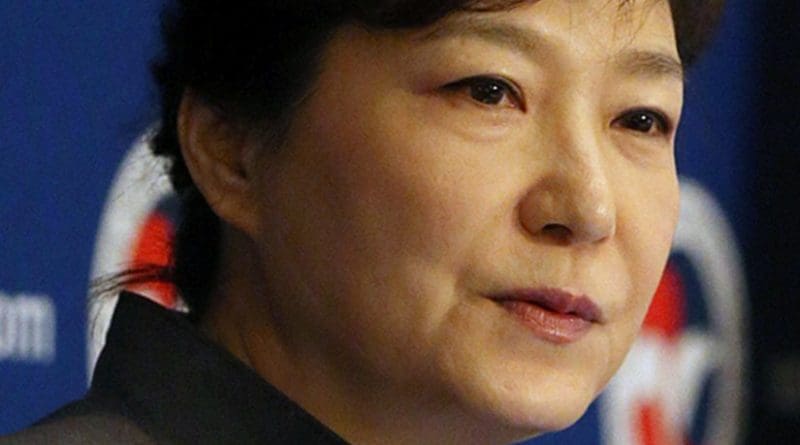China-Japan-South Korea: A New Beginning? – Analysis
By IPCS
By Sandip Kumar Mishra*
On 01 November 2015, Chinese Prime Minister Li Keqiang, Japanese Prime Minister Shinzo Abe, and South Korean President Park Geun-hye met for their sixth trilateral meeting in Seoul, South Korea. This meeting took place after an approximately three-year hiatus. Previously, from 2008 to 2012, they had held five trilateral meetings annually to discuss and coordinate their economic relations in the wake of the global financial crisis. In 2012, these countries also began negotiating on a trilateral Free Trade Agreement (FTA). However, the arrival of three new leaders in these countries also brought strong rhetoric and actions between Japan and China and also between Japan and South Korea, which resulted in a growing discord between them – and this annual meeting got discontinued.
There are at least three important positives of this trilateral meeting that may have important implications for the region. First, the very meeting of the three top leaders of the region is a welcome development. For the past three years, China, Japan and South Korea were unable to come together and discuss their mutual perspectives and disagreements with one another. China and Japan have been at loggerheads on issues related to the Senkaku/Diaoyu islands; China’s unilateral announcement of the Air Defence Identification Zone (ADIZ) in the East China Sea; and disputes on history. Even though these three leaders held meetings with one another at some multilateral fora, their postures have been most awkward and uncompromising.
The hostility has also had economic implications and their bilateral trades have been facing several problems. China under the new leadership seeks to exert more weight in the region and that has resulted into growing discomfort in the neighbouring countries. Similarly, Japan under Abe also evokes strong nationalism to have an assertive policy in the region along with revision of its ‘peace constitution’. The ‘unapologetic’ and ‘assertive’ Japanese policies have not only worsened its relations with China but have also had implications for Japan-South Korea relations. Abe’s visit to the Yasukuni Shrine; Japan’s stance on the Dokdo/Takeshima islands, comfort women and issues of history have led to growing rift between Japan and South Korea. In this context, it could be said that even though this meeting may not have great outcomes, the meeting itself is definitely an important step in the right direction.
Second, the three leaders agreed during the trilateral meeting that a nuclear North Korea is unacceptable and all of them would try their best to restart the Six-Party talks that has remained stalled for almost seven years. The joint statement gives priority to the North Korean denuclearisation issue and it would put further pressure on North Korea to give up its nuclear weaponisation programme. In fact, China has not been happy with new North Korean leader Kim Jong-un’s frequent provocative behaviours and escalation of tensions on the Korean peninsula and the region. China thinks that the North Korean nuclear threat would bring more role for the US in the regional politics and it would be detrimental for Chinese national interests.
The growing distance between Beijing and Pyongyang could be understood by the fact that Chinese President Xi Jinping has held two summit meets with his South Korean counterpart Park Geun-hye in 2013 and 2014 but there has been no top level meeting between the leaders of China and North Korea.
After a long gap, Liu Yunshan, the fifth ranking Chinese Communist Party leader visited North Korea in October 2015 to participate in the 70th Anniversary of the establishment of North Korea Workers’ Party. Although China has been trying to mend its relations with North Korea, the strong message emanating from the trilateral meeting makes it clear that China has not conceded to North Korean ambitions. If the regional countries and the US could have a coordinated common stance on the North Korean nuclear issue, it would be difficult for North Korea to continue with its nuclear weaponisation programme.
Third, the leaders of these three countries expressed that their trilateral FTA must be concluded as soon as possible. The eight rounds of mutual talks on the FTA issue have not been quite successful until now and the matter has progressed sufficiently. It is important to note that the combined GDP of these three countries is almost US $15 trillion and they collectively constitute almost 20 per cent of the world trade. The trilateral FTA would thus be an extremely important development.
It might bring the possibilities of a Regional Comprehensive Economic Partnership (RCEP) – that China has proposed for the East and Southeast Asian countries and that is understood in its contrast with the Trans-Pacific Partnership – closer to realisation. The inclusion of the FTA issue in the trilateral meeting and a closer possibility of the RCEP is an important achievement for China. It seems that Japan and South Korea too feel that the proposed arrangement would be valuable for them.
Overall, the trilateral meeting appears to be a wise move as it avoided discussing all mutual controversial issues in detail and only discussed those issues on which all three could begin their cooperation on. However, how much these leaders are ready to restrain themselves on controversial issues in future and carry forward the good vibes created during the summit for the peace and prosperity of the region, remains to be seen.
* Sandip Kumar Mishra
Assistant Professor, Department of East Asian Studies, Delhi University

